I had a chance to setup a few new RAID systems last week at different client sites. I always like to do a Blackmagic Disk Speed Test and thought it would be fun to share. Manufacturer’s speed claims are one thing but real world performance is another, and much more meaningful.
Here’s a Drobo 5D3 connected via Thunderbolt 3 on a new, maxed out iMac. This 5 bay enclosure costs $678 without drives and comes with two Thunderbolt 3 / USB-C ports and one USB 3.0 port.
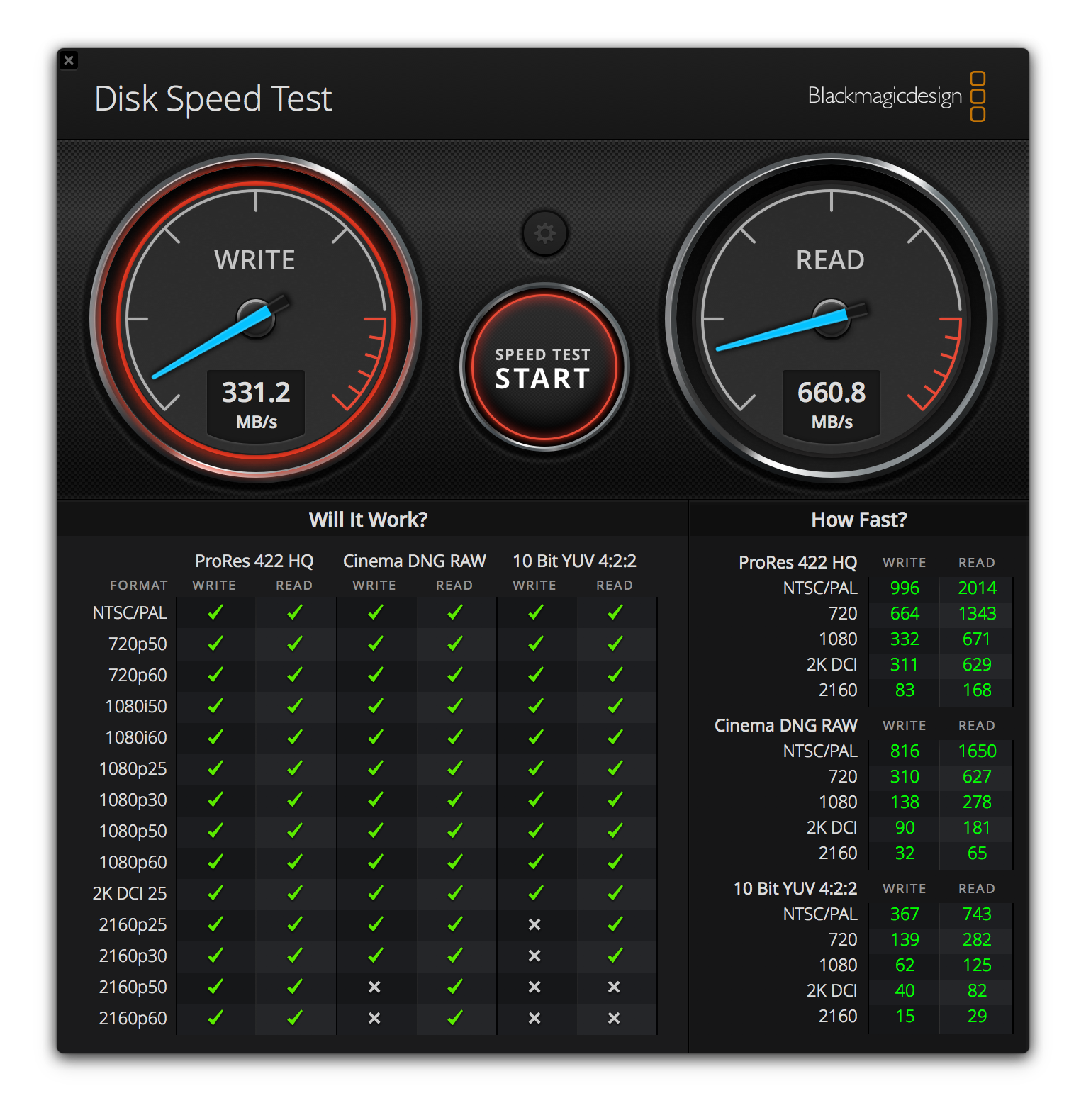
Another client asked me for a recommendation prior to purchasing and I’ve been recommending OWC’s super fast and affordable ThunderBay enclosures for the past year. Here’s the OWC ThunderBay 4 RAID connected via Thunderbolt 2 on an older iMac. This 4 bay enclosure costs $479 without drives and comes with two Thunderbolt 3 / USB-C ports. It comes preconfigured for RAID5 and includes SoftRAID v5 software.
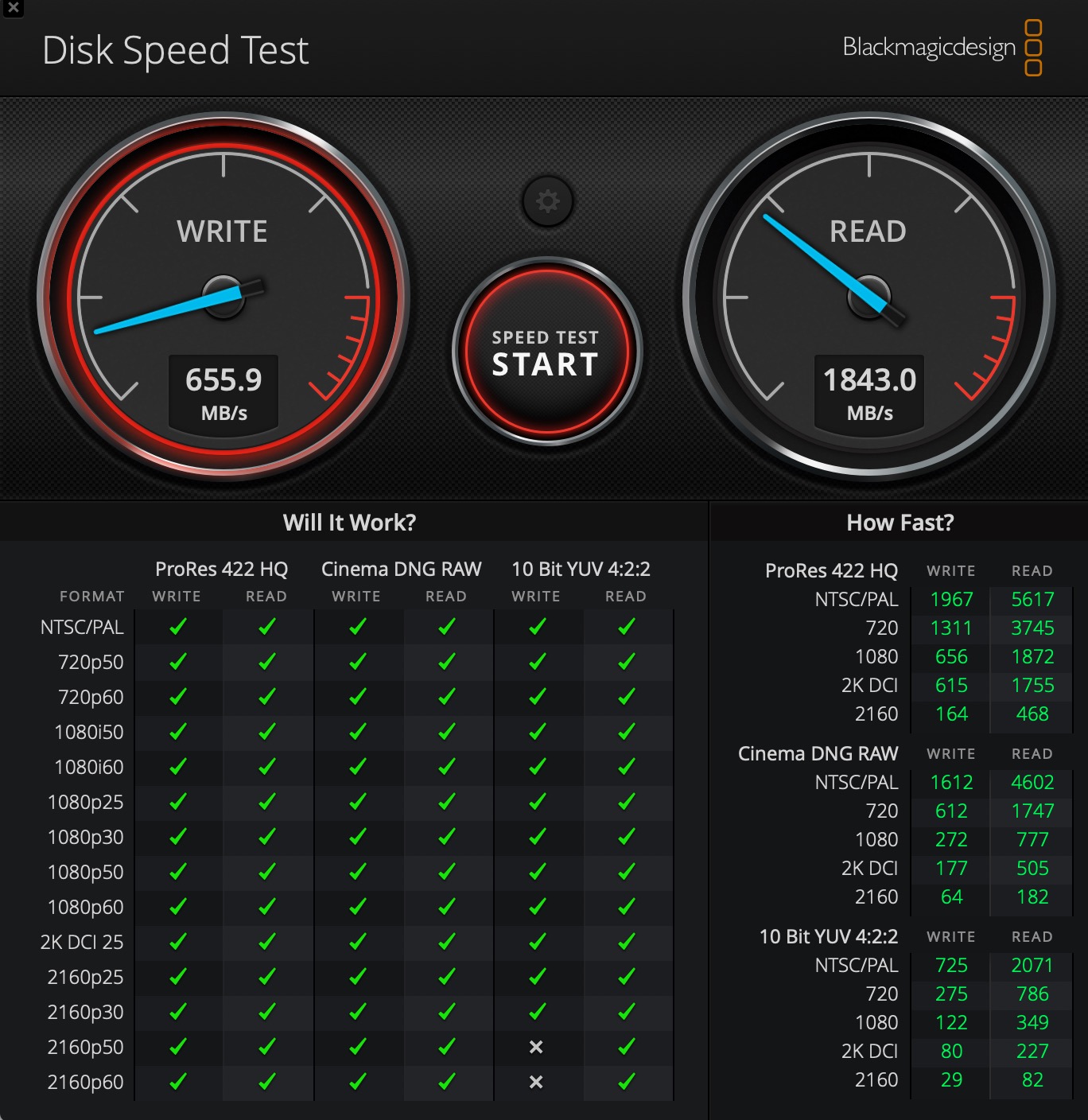
Both of the above drives were outfitted with the same Seagate IronWolf 6TB drives. As someone who is sensitive to noise, I can tell you these drives are not only a good value, they are super quiet.
Drobos have been popular for a long time for their "Apple Easy" setup and configuration friendliness. I’ve worked with a lot of other brands but the real world performance specs and ease fo use haven’t impressed. We are only a year into our experience with these ThunderBay drives and haven’t witnessed a drive failure + replacement yet, but so far, they are affordable, super simple and straightforward to use. And crazy fast. It’s worth mentioning that OWC caters to Mac users and SoftRAID is currently a mature Mac only product. PC users can use Microsoft’s Storage Spaces application or the SoftRAID beta that will be released soon. SoftRAID v2 will introduce RAID level 5 probably next year. So currently the options and performance on Windows isn’t what I’d like it to be even on a super fast PC yet. OWC Thunderbolt RAID is really for Mac performance junkies right now.
The above drives are direct attached storage (DAS) for a single user on a simple computer. They are the kind of drive an independant photographer or video professional might use. Groups of designers, photo or video production teams needing to share a large volume should really skip NAS (which sucks!) and consider the ultimate setup: an xSAN system. xSAN connects teams of people with fiber optic cabling to a single RAID that the computer thinks is an internal hard drive. This completely by passes networking and all the problems that network packets cause (corruption, performance, file sharing permissions, etc). An xSAN system can be even faster than an internal SSD. I feel like xSAN is a best kept secret that only a small percentage of my most impressive clients use. Here’s a Blackmagic screen grab made on an older Mac Mini connected to a remote xSAN volume:
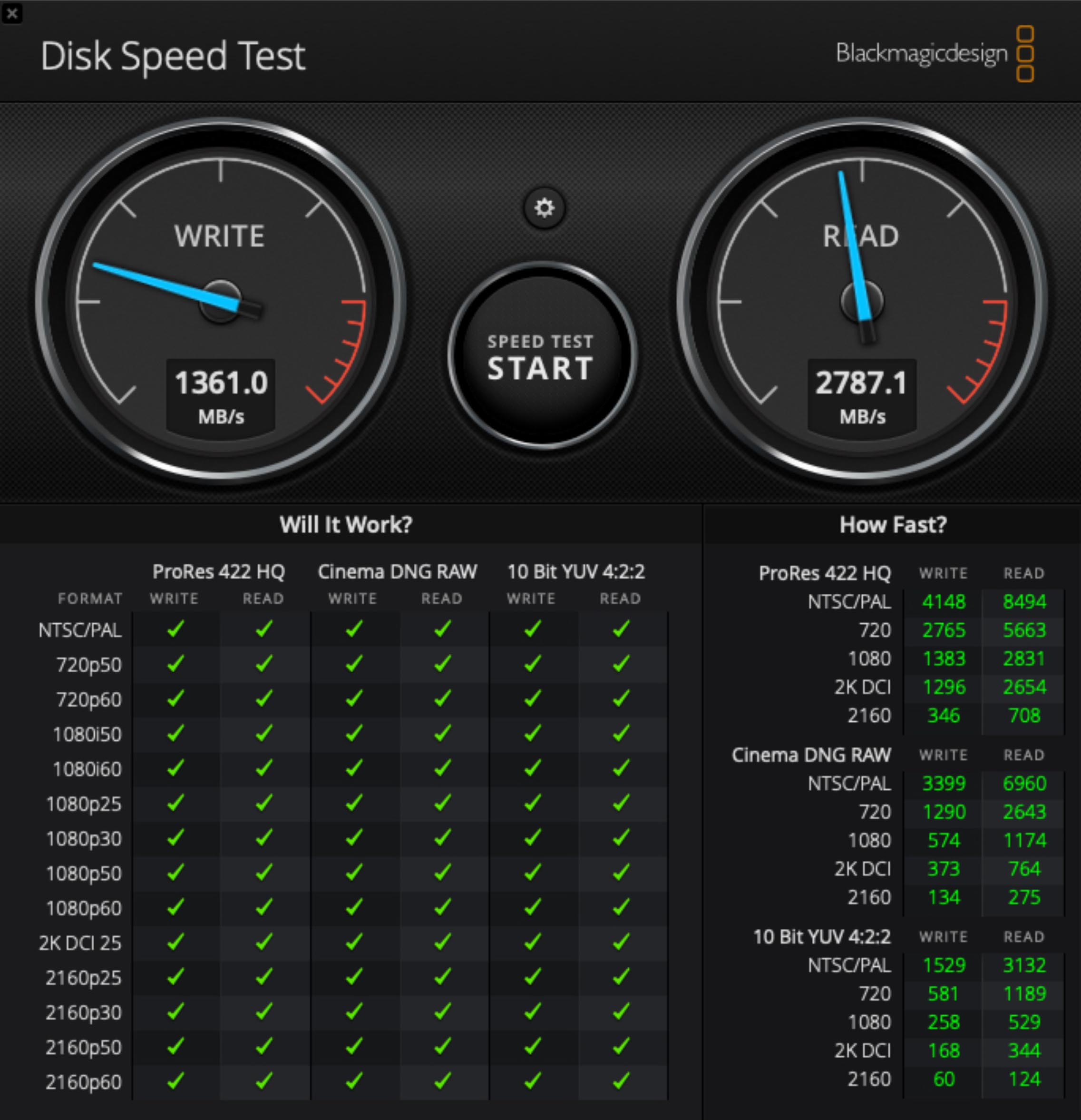
All of these screen grabs were made with Apple HFS+ formatted volumes. Reformatting to APFS when possible increases performance and speed test results substantially. Conversely, reformatting the same drive to exFAT and NTFS lowers performance. I hear ZFS has excellent performance but I haven’t tested it myself. So it’s important to mention that formatting effects performance and APFS and ZFS are the preferred formats to use when speed is a priority.
OK, I hope that’s food for thought. Do let me know if you want to talk more about this.

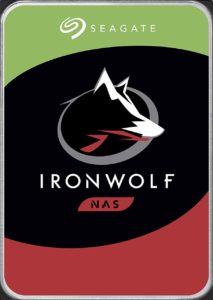
Well it’s 2022 now and here’s the internal SSD on my 16″ MBP M1 Max:
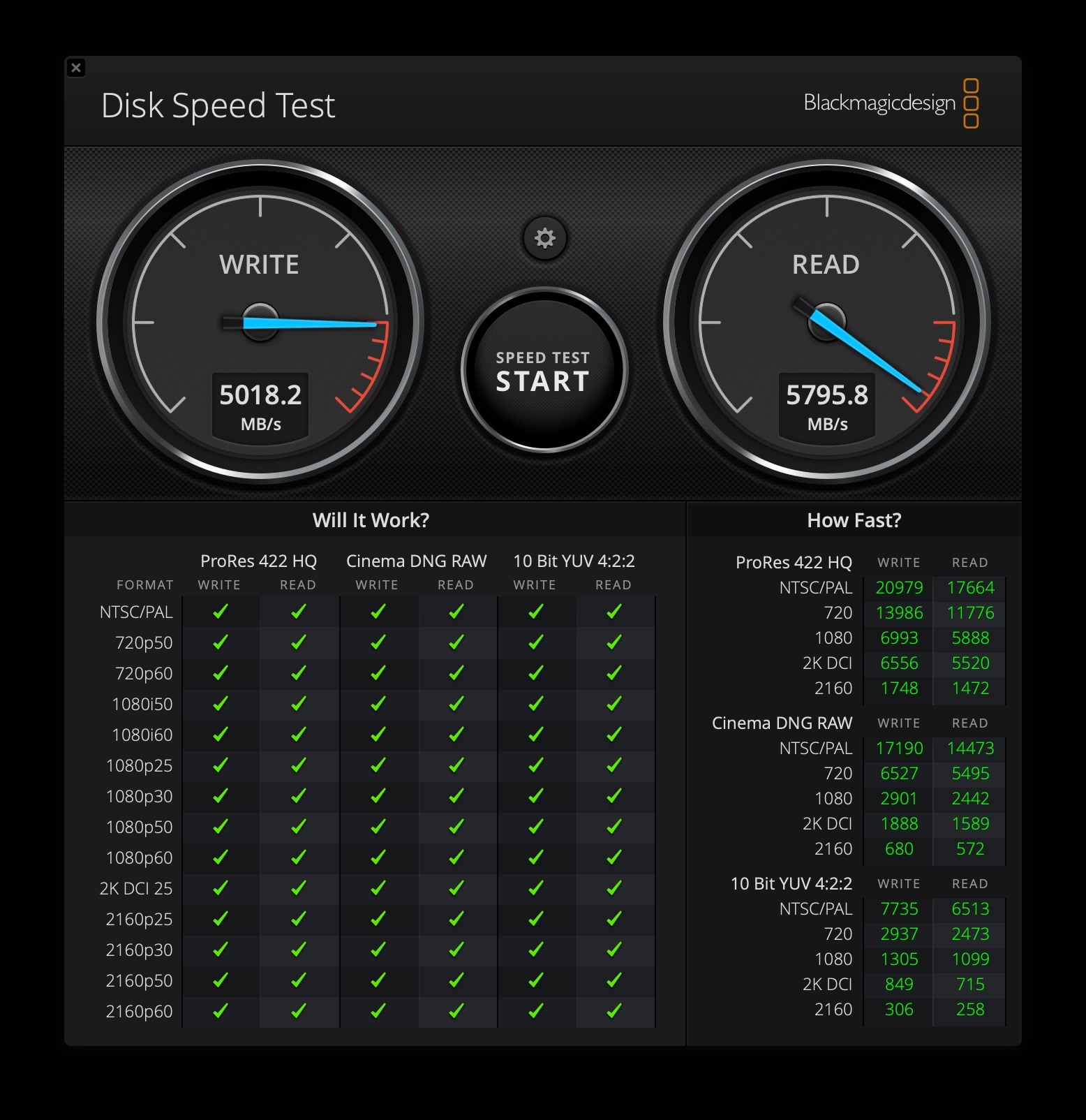
What’s the RAID configuration in the OWC Thunderbay screenshot? Is that using hardware RAID or SoftRAID?
Hey Brian. SoftRAID, RAID5.
Several people have asked what the Disk Speed Tests results are on my own 2016 MacBookPro. When I boot into Windows10 I get ~450MB/s for both read and write on the NTFS volume. Here are the results booting into MacOS Mojave on the APFS volume: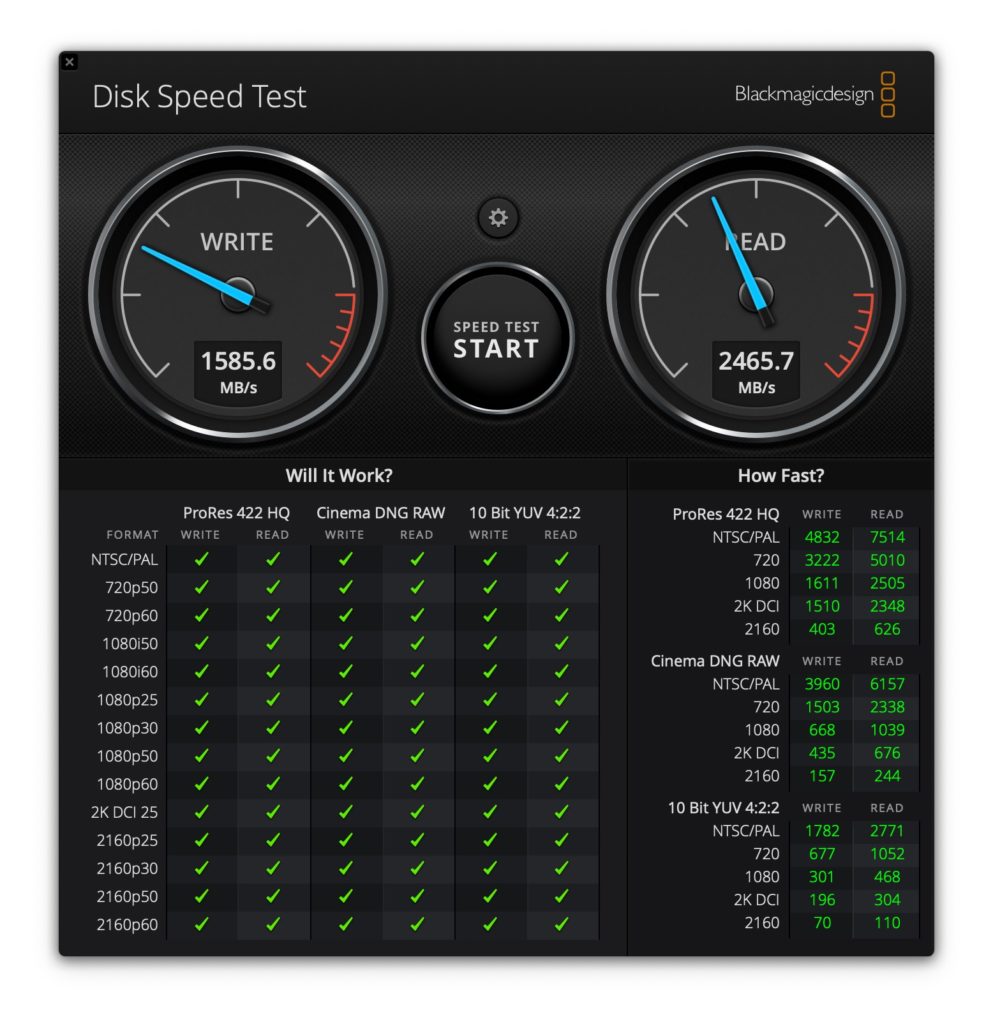 Speed test on the internal SSD on a 2016 MacBookPro Not bad for a 2016 machine…
Speed test on the internal SSD on a 2016 MacBookPro Not bad for a 2016 machine…
[caption id="attachment_71847" align="aligncenter" width="840"]
I just added “It’s worth mentioning that OWC caters to Mac users and there isn’t a Windows version of SoftRAID. While one can use Microsoft’s Storage Spaces application to configure the RAID, the options and performance isn’t what I’d like it to be even on a super fast PC. OWC Thunderbolt RAID is really for Mac performance junkies.”